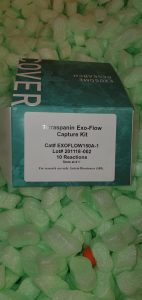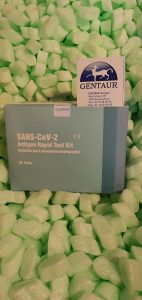First Report of Powdery Mildew Caused by Golovinomyces biocellatus on Peppermint in California.
Root and Crown Rot of Anthurium Caused by Calonectria ilicicola in Iran.



BACKGROUNDAssessment of the change in tumour burden is a vital characteristic of the <em>medical</em> evaluation of most cancers therapeutics: each tumour shrinkage (goal response) and illness development are helpful endpoints in trials.
Since RECIST was revealed in 2000, many <em>investigators</em>, cooperative teams, business and authorities authorities have adopted these criteria in the evaluation of remedy outcomes. However, quite a lot of questions and points have arisen which have led to the event of a revised RECIST guideline (model 1.1).
Evidence for adjustments, summarised in separate papers in this particular problem, has come from evaluation of a giant information warehouse >>6500 sufferers), simulation research and literature evaluations. HIGHLIGHTS OF REVISED RECIST 1.1: Major adjustments embrace:
Number of lesions to be assessed: based mostly on proof from quite a few trial databases merged into an information warehouse for evaluation functions, the variety of lesions required to evaluate tumour burden for response dedication has been lowered from a most of 10 to a most of 5 complete (and from 5 to 2 per organ, most).
Assessment of pathological lymph nodes is now integrated: nodes with a brief axis of 15 mm are thought-about measurable and assessable as goal lesions. The quick axis measurement needs to be included in the sum of lesions in calculation of tumour response.

Nodes that shrink to <10mm quick axis are thought-about regular. Confirmation of response is required for trials with response main endpoint however is now not required in randomised research for the reason that management arm serves as acceptable technique of interpretation of knowledge.
Disease development is clarified in a number of points: in addition to the earlier definition of development in goal illness of 20% enhance in sum, a 5mm absolute enhance is now required as effectively to protect towards over calling PD when the entire sum may be very small.
Furthermore, there’s steerage provided on what constitutes ‘unequivocal development’ of non-measurable/non-target illness, a supply of confusion in the unique RECIST guideline. , a piece on detection of latest lesions, together with the interpretation of FDG-PET scan evaluation is included. Imaging steerage: the revised RECIST features a new imaging appendix with up to date suggestions on the optimum anatomical evaluation of lesions.
key query thought-about by the RECIST Working Group in growing RECIST 1.1 was whether or not it was acceptable to maneuver from anatomic unidimensional evaluation of tumour burden to both volumetric anatomical evaluation or to purposeful evaluation with PET or MRI. It was concluded that, at current, there’s not adequate standardisation or proof to desert anatomical evaluation of tumour burden. The solely exception to that is in the usage of FDG-PET imaging as an adjunct to dedication of development. As is detailed in the ultimate paper in this particular problem, the usage of these promising newer approaches requires acceptable medical validation research.
The National Institute on Aging and the Alzheimer’s Association charged a workgroup with the duty of revising the 1984 criteria for Alzheimer’s illness (AD) dementia.
The workgroup sought to make sure that the revised criteria can be versatile sufficient for use by each basic healthcare suppliers with out entry to neuropsychological testing, superior imaging, and cerebrospinal fluid measures, and specialised investigators concerned in analysis or in medical trial research who would have these instruments out there.
We current criteria for all-cause dementia and for AD dementia. We retained the final framework of possible AD dementia from the 1984 criteria. On the premise of the previous 27 years of expertise, we made a number of adjustments in the medical criteria for the prognosis. We additionally retained the time period doable AD dementia, however redefined it in a way extra centered than earlier than.
Biomarker proof was additionally built-in into the diagnostic formulations for possible and doable AD dementia to be used in analysis settings. The core medical criteria for AD dementia will proceed to be the cornerstone of the prognosis in medical follow, however biomarker proof is anticipated to reinforce the pathophysiological specificity of the prognosis of AD dementia.
Much work lies forward for validating the biomarker prognosis of AD dementia.
The prognosis of dementia as a consequence of Alzheimer’s illness: suggestions from the National Institute on Aging-Alzheimer’s Association workgroups on diagnostic pointers for Alzheimer’s illness
The National Institute on Aging and the Alzheimer’s Association charged a workgroup with the duty of revising the 1984 criteria for Alzheimer’s illness (AD) dementia.
The workgroup sought to make sure that the revised criteria can be versatile sufficient for use by each basic healthcare suppliers with out entry to neuropsychological testing, superior imaging, and cerebrospinal fluid measures, and specialised investigators concerned in analysis or in medical trial research who would have these instruments out there. We current criteria for all-cause dementia and for AD dementia.
We retained the final framework of possible AD dementia from the 1984 criteria. On the premise of the previous 27 years of expertise, we made a number of adjustments in the medical criteria for the prognosis.
We additionally retained the time period doable AD dementia, however redefined it in a way extra centered than earlier than. Biomarker proof was additionally built-in into the diagnostic formulations for possible and doable AD dementia to be used in analysis settings.
The core medical criteria for AD dementia will proceed to be the cornerstone of the prognosis in medical follow, however biomarker proof is anticipated to reinforce the pathophysiological specificity of the prognosis of AD dementia. Much work lies forward for validating the biomarker prognosis of AD dementia.
OBJECTIVEThe etiology of ischemic stroke impacts prognosis, end result, and administration. Trials of therapies for sufferers with acute stroke ought to embrace measurements of responses as influenced by subtype of ischemic stroke.
A system for categorization of subtypes of ischemic stroke primarily based mostly on etiology has been developed for the Trial of Org 10172 in Acute Stroke Treatment (TOAST).METHODSA classification of subtypes was ready utilizing medical options and the outcomes of ancillary diagnostic research.
“Possible” and “possible” diagnoses may be made based mostly on the doctor’s certainty of prognosis. The usefulness and interrater settlement of the classification had been examined by two neurologists who had not participated in the writing of the criteria. The neurologists independently used the TOAST classification system in their bedside evaluation of 20 sufferers, first based mostly solely on medical options after which after reviewing the outcomes of diagnostic assessments.
RESULTSThe TOAST classification denotes 5 subtypes of ischemic stroke: 1) large-artery atherosclerosis, 2) cardioembolism, 3) small-vessel occlusion, 4) stroke of different decided etiology, and 5) stroke of undetermined etiology. Using this ranking system, interphysician settlement was very excessive.
The two physicians disagreed in just one affected person. They had been each capable of attain a selected etiologic prognosis in 11 sufferers, whereas the reason for stroke was not decided in 9.CONCLUSIONSThe TOAST stroke subtype classification system is straightforward to make use of and has good interobserver settlement.
This system ought to permit investigators to report responses to remedy amongst essential subgroups of sufferers with ischemic stroke. Clinical trials testing therapies for acute ischemic stroke ought to embrace comparable strategies to diagnose subtypes of stroke.
cute kidney damage (AKI) is a fancy dysfunction for which presently there isn’t a accepted definition. Having a uniform normal for diagnosing and classifying AKI would improve our means to handle these sufferers.
Future medical and translational analysis in AKI would require collaborative networks of investigators drawn from varied disciplines, dissemination of knowledge by way of multidisciplinary joint conferences and publications, and improved translation of data from pre-medical analysis. We describe an initiative to develop uniform requirements for outlining and classifying AKI and to ascertain a discussion board for multidisciplinary interplay to enhance take care of sufferers with or in danger for AKI.
Members representing key societies in crucial care and nephrology together with extra consultants in grownup and pediatric AKI participated in a two day convention in Amsterdam, The Netherlands, in September 2005 and had been assigned to one among three workgroups. Each group’s discussions fashioned the premise for draft suggestions that had been later refined and improved throughout dialogue with the bigger group.
Dissenting opinions had been additionally famous. The closing draft suggestions had been circulated to all contributors and subsequently agreed upon because the consensus suggestions for this report. Participating societies endorsed the suggestions and agreed to assist disseminate the outcomes.
RESULTSThe time period AKI is proposed to signify the complete spectrum of acute renal failure. Diagnostic criteria for AKI are proposed based mostly on acute alterations in serum creatinine or urine output.
A staging system for AKI which displays quantitative adjustments in serum creatinine and urine output has been developed.CONCLUSIONSWe describe the formation of a multidisciplinary collaborative community centered on AKI. We have proposed uniform requirements for diagnosing and classifying AKI which can have to be validated in future research. The Acute Kidney Injury Network affords a mechanism for continuing with efforts to enhance affected person outcomes.